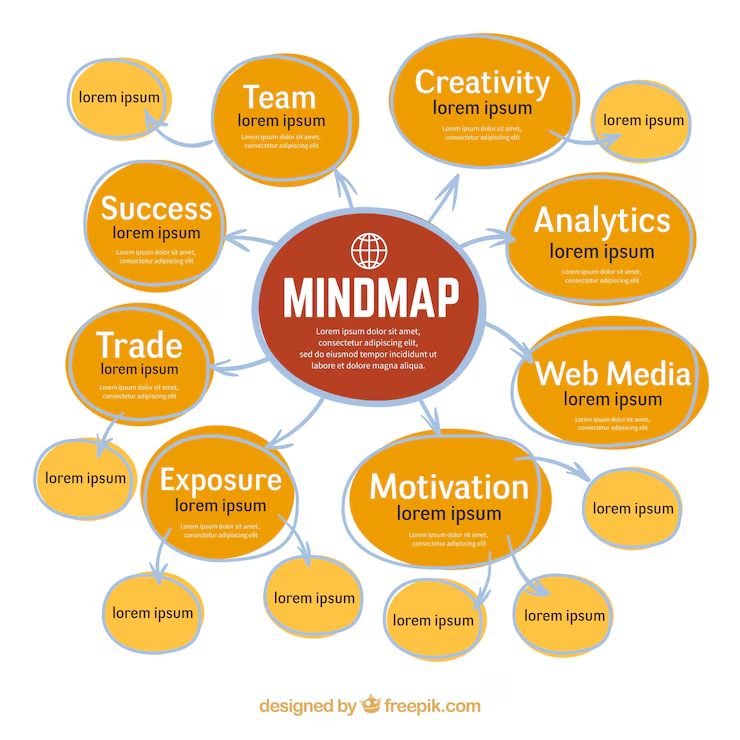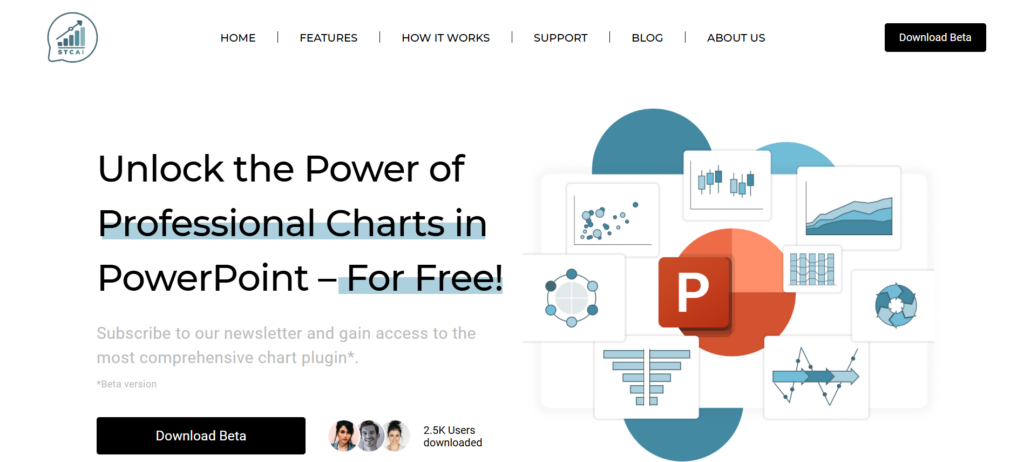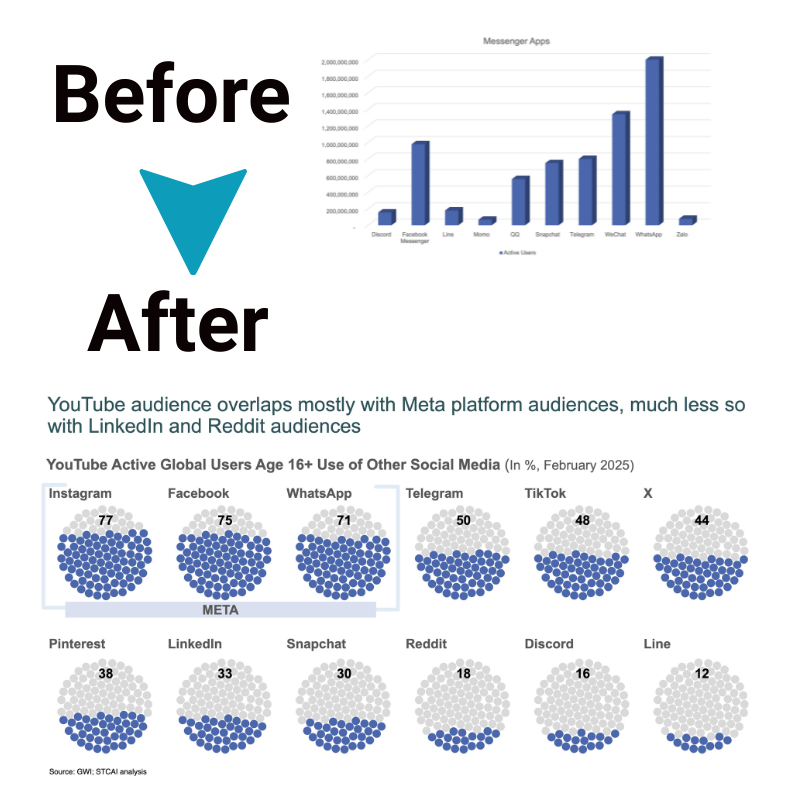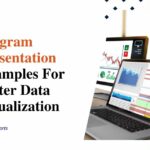8 Free PowerPoint Diagrams for Engaging Presentations
To create captivating presentations, you need visually appealing diagrams that can effectively convey information. Presenters receive various ways to transform complex data into digestible visuals through free PowerPoint diagrams.
The eight essential diagram types are explored in this guide, and how to use them to maximum impact. Free PowerPoint diagrams will help you craft your message in a clear way, whether you are creating business proposals or educational content.
1. Circle graph (pie chart)

The circle graph maker provides a way for presenters to present proportional data as a simple segment to understand. These charts are best used to compare parts of a whole; it’s rarely valuable to compare two things that aren’t part of a whole.
More modern circle graphs use gradient colors and small animations to make them look nice. Data interpretation is straightforward when percentage labels and brief descriptions are added. Users can customize it with simple branding to match corporate branding while keeping professional aesthetics.
2. Pictograph

A pictograph example is repeated icons or symbols to show data, making the statistics more relatable. This pictograph-maker approach is especially useful for demographics or survey results. Relevant icons allow audiences to emotionally connect with the data.
Pictograph maker can then highlight features or trends by means of color variations. Icons appearing sequentially in presentations can build excitement as simple animations.
3. Treemap

Treemap examples represent hierarchical data by nesting rectangles of varying sizes. The beauty of these diagrams is that they are excellent at showing complex organizational structures or product categories. Different color schemes make the difference between main categories and subcategories.
Inherently, size variations convey relative importance or value, or ‘relative ratios.’ Specific sections in the present can be zoomed in without moving a single pixel using interactive elements.
4. Waterfall Chart

Waterfall charts depict sequential data changes and are useful in presentations on financial and project timelines. Visual narrative is built on top of previous values, making each bar a part of the story.
It makes positive and negative changes easy to distinguish. Connector lines are added between bars to stress the relation between different stages. Value progression is made simple with some animations.
5. Timeline

The representation of time related events or projects phases makes timeline diagrams very simple enough to understand. Short timeframes are best served by horizontal layouts, longer by vertical ones. Milestone markers add some space between small achievements and deadlines.
Sometimes, color gradients can help you track project progress or time periods. Different stages are instantly recognizable with simple icons.
6. Funnel chart

Their use is ideal for sales processes as they show the reduction through progressive stages in a funnel diagram. Quick insights about the conversion rates are given with labels showing the percentage at each level. Volume changes are effectively communicated between stages by width variations.
Brief descriptions of what happens at each funnel stage are added. It also had subtle animations to help the audience follow the natural flow.
7. Venn diagram

We visualize relationships of the different sets using overlapping circles in the Venn diagram. Using these free PowerPoint diagrams is useful to show commonalities and differences. Overlapping sections are easier to see with a gradient fill. Icons within sections also reinforce concepts. Progressively, simple animations can reveal relationships.
8. MindMap

Information radiated out from a central concept to connected branches in mind maps. These free PowerPoint diagrams break down complex topics into manageable segments.
Different branches are colour coded for category recognition. Topics become more memorable when small icons are added. Progressive animations help audiences to follow thought processes.
Streamline your design process with STC AI

STC AI simplifies diagram creation into a smooth and natural experience in PowerPoint. With so many chart types and visual elements at your fingertips, this powerful tool keeps you in one place. Through easy to use controls and pre built templates, users can create stunning visualizations.
STC AI is adaptable to meet your needs, from simple graphs to complex decision trees. The platform achieves design flexibility whilst maintaining brand consistency.
Ending note
PowerPoint diagrams give free presenters the ability to create compelling visual stories without fancy software. They help to take raw data and turn it into engaging visuals that speak to an audience. Platforms like STC AI make it possible for everyone to create professional diagrams. Keep in mind that good visualization makes the message more effective and more engaging for the audience.
Frequently Asked Questions
1. What are the differences between free and paid PowerPoint diagrams?
Most of the presentation needs have essential features, such as free diagrams and paid versions that provide advanced customization.
2. Why is a diagram useful in presentations?
Good diagrams are simple, use correct colors, and show data clearly without bombarding the viewer.
3. Can beginners create professional diagrams?
Modern tools and templates make it easy for beginners to create good looking diagrams.







